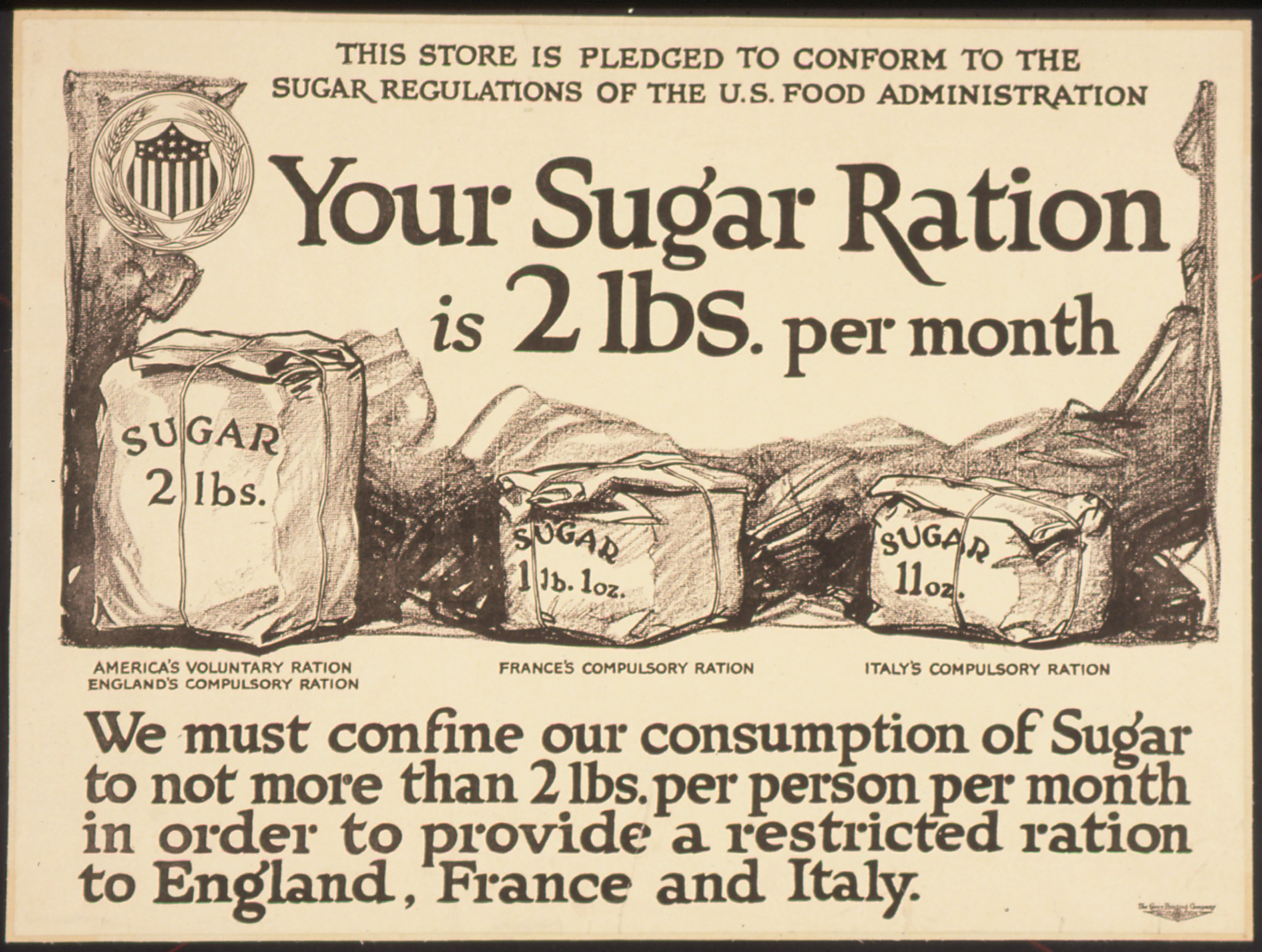
With many parents working during World War II, children learned the facts involved in point rationing to help out the family. This young boy is proud to use his war ration book for the first time, helping out his family.
This year’s Memorial Day weekend was beautiful! We couldn’t have asked for better weather. People were busy gardening, boating, fishing, or just enjoying being outdoors.
No matter what the weather, Memorial Day weekend is a great time to get together with family, have a cookout, bake some cupcakes, or just relax on the porch with an extra cup of coffee.
During World War II, it wasn’t quite so easy to plan to bake cupcakes or anything that called for quite a bit of sugar. And most people would not have been able to have that extra cup of coffee.
It was during World War II that rationing in the United States was introduced in stages.
In the summer of 1941 the Office of Price Administration (OPA) warned Americans of the potential that there could be shortages of gasoline, steel, aluminum and electricity. The OPA believed that with factories converting to military production and consuming critical supplies, rationing would become necessary if the country entered the war.
Rationing did begin after the attack on Pearl Harbor. Tires were the first item to be rationed by the OPA, since there was a shortage of rubber for tires. This was because the Japanese had quickly conquered the rubber-producing regions of Southeast Asia. As a result, the OPA ordered the temporary end of tire sales on Dec. 11, 1941.
There was a temporary end of all civilian automobile sales on Jan. 1,1942. Dealers were left with one half million unsold cars. Only certain professions, such as doctors and clergymen, qualified to purchase the remaining new automobiles. Automobile factories stopped manufacturing civilian models by early February 1942 and converted to producing tanks, aircraft, weapons, and other military products, with the United States government as the only customer. By May the national speed limit was lowered to 35 miles per hour to save fuel and rubber for tires.

These boys were recycling tires during World War II.
World War4 – The cover of a World War II ration book.
By June 1942 companies also stopped manufacturing metal office furniture, phonographs, radios, refrigerators, sewing machines, vacuum cleaners, and washing machines for civilians.
Gasoline ration cards were distributed to people who could certify that they had a need for gasoline. The other qualification was that each person owned no more than five tires. If someone had an excess of five tires, the government confiscated them.
Gasoline rationing was prioritized by need and how important it was that the person was able to drive. An “A” sticker on a car was the lowest priority and that car owner was entitled to three to four U.S. gallons of gasoline per week. “B” stickers were issued to workers in the military industry, entitling them up to eight U.S. gallons of gasoline per week. Those who were very essential to the war effort received “C” stickers, and included professions such as doctors. Truckers received “T” rations. “X” stickers on cars entitled the owner to unlimited supplies and were the highest priority in the system. Civil defense workers, firemen, ministers, and police were in this category. A scandal broke out when it was discovered that 200 congressmen illegally received “X” stickers.
Due to the gasoline rationing, all forms of automobile racing, including the Indianapolis 500, were banned. Pleasure driving, especially for sightseeing, was also banned.
Rationing of metal affected most items sold in cans. As of March 1, 1942, dog food could no longer be sold in tin cans. Manufacturers switched to dehydrated versions. Toothpaste was sold in metal tubes and anyone wishing to purchase a new toothpaste tube had to turn in an empty one.
Sugar was the first consumer commodity rationed. All sales ended on April 27, 1942 but resumed eight days later when civilians first received ration books, which they nicknamed the “Sugar Book.” Each person received a ration of one half pound per person per week. This was half of normal consumption. Commercial users such as bakeries and ice cream makers received rations of about 70 percent of normal usage.
Coffee was rationed nationally starting at the end of November 1942, in part because of German U-boat attacks on shipping from Brazil. Each person received one pound every five weeks which was about half of normal consumption.
Meat, lard, shortening and oils, cheese, butter, margarine, dried fruits, canned milk, jams, jellies, fruit butter, and processed foods, including canned, bottled and frozen, were rationed by November 1943.
Many retailers actually welcomed rationing because they were already experiencing shortages of many items. Restaurant owners and other merchants had to collect ration stamps to restock their supplies.
By 1946 all rationing had ended.
Memorial Day is observed every year on the last Monday of May. It was formerly known as Decoration Day and originated after the American Civil War to commemorate the Union and Confederate soldiers who died in the war. By the 20th century, Memorial Day had been extended to honor all Americans who died while in the military service.
We appreciate all the veterans who fought and died to keep the freedom alive in our country. And those veterans appreciated the civilians who rationed at home to help them do it.





